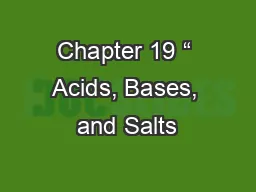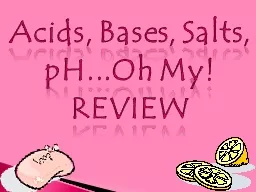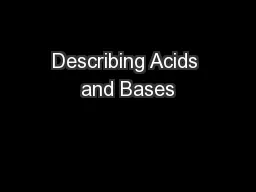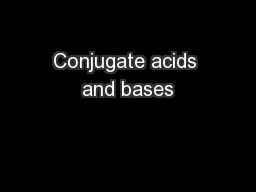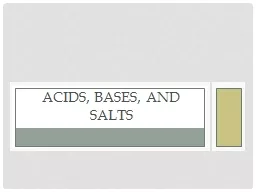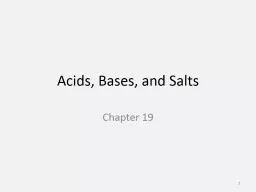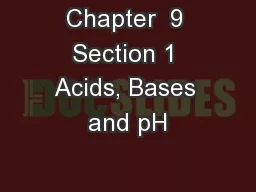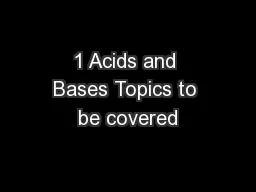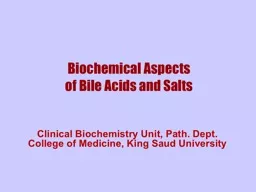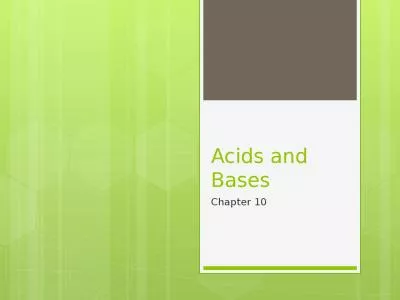PPT-Chapter 19 “ Acids, Bases, and Salts
Author : pasty-toler | Published Date : 2018-10-13
Properties of Acids They taste sour dont try this at home They can conduct electricity Can be strong or weak electrolytes in aqueous solution React with metals
Presentation Embed Code
Download Presentation
Download Presentation The PPT/PDF document "Chapter 19 “ Acids, Bases, and Salts" is the property of its rightful owner. Permission is granted to download and print the materials on this website for personal, non-commercial use only, and to display it on your personal computer provided you do not modify the materials and that you retain all copyright notices contained in the materials. By downloading content from our website, you accept the terms of this agreement.
Chapter 19 “ Acids, Bases, and Salts: Transcript
Download Rules Of Document
"Chapter 19 “ Acids, Bases, and Salts"The content belongs to its owner. You may download and print it for personal use, without modification, and keep all copyright notices. By downloading, you agree to these terms.
Related Documents

